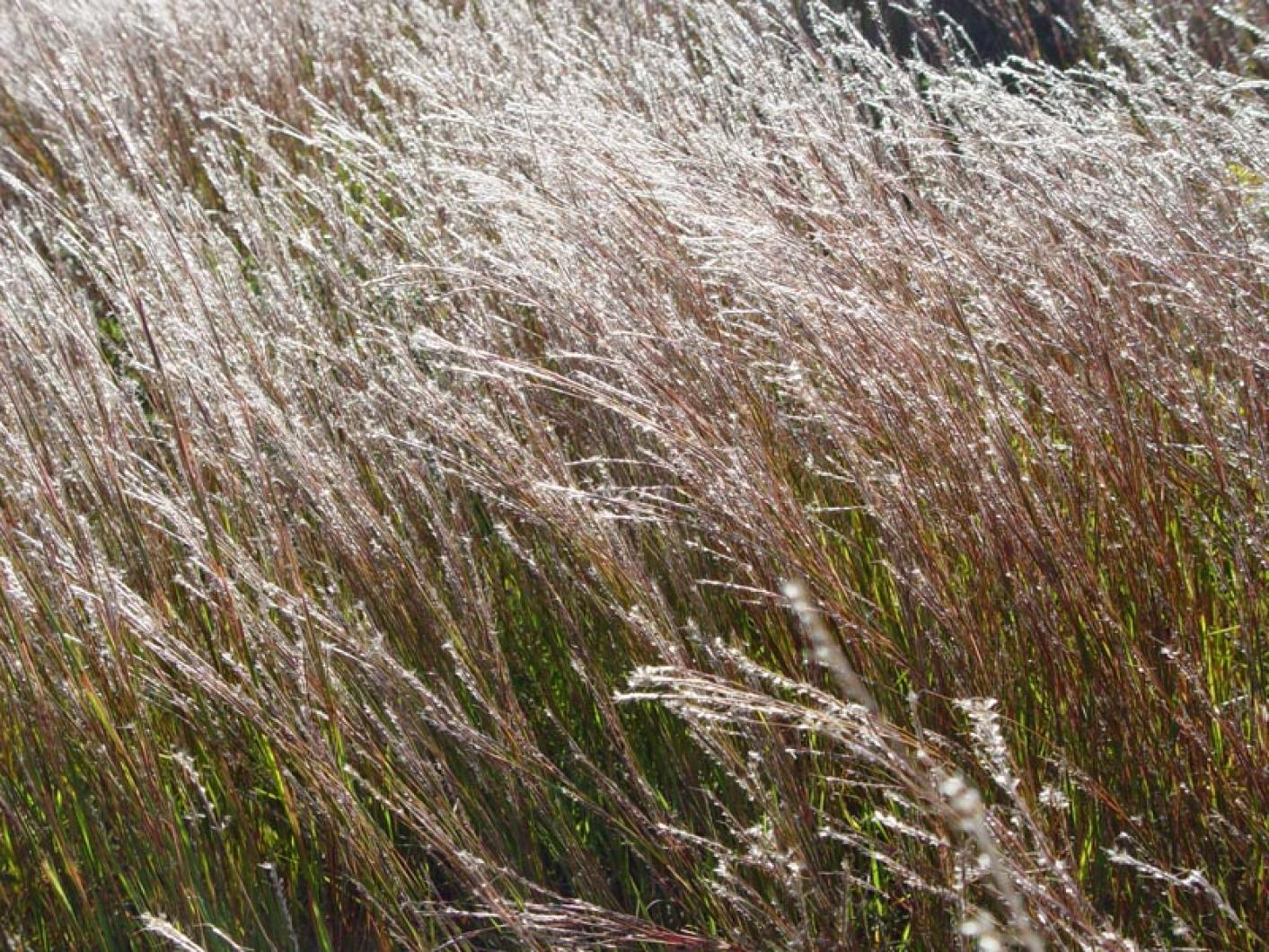Plants in the grass family (Poaceae) dominate the planet by the breadth of their global coverage. They play a critical role in preventing erosion, in addition to providing forage and habitat for many animal species. The majority of the most important agricultural crops in the world are grasses, including wheat, corn, rye, oats and sugarcane.
Here on the Vineyard many grasses occur naturally, but too often their virtues and beauty are overlooked. Several are perennial grasses that have adapted to the predominantly dry soils through the development of deep fibrous root systems that allow them to survive drought periods as well as periodic fires. Many of the grass species found on the Island once had extensive natural ranges in North America. Now they are considered relics of extensive prairie ecosystems that exist only as fragments today.
One of the most ubiquitous yet beautiful grasses is the little bluestem, Schizachyrium scoparium. Locally it is found on the sandplain grassland and in open and abandoned agricultural fields. A perennial grass reaching four feet in height, its flowers appear in late summer and progress into downy windblown seeds. In late October to mid-November little bluestem turns the Vineyard fields and meadows a burnished red while the low sun illuminates the radiant glow of their fluffy seedheads.
The six-foot-tall big bluestem, Andropogon gerardii, is a close relative of little bluestem. It is sometimes called turkeyfoot due to its distinctive three-part inflorescence. It can be found on both moist and dry sites, although it’s not as common as the little bluestem. Big bluestem has a spotty distribution on the Island where it often appears in old road cuts or as an opportunist in disturbed areas. Once established, it makes a permanent home.
The native switchgrass, Panicum virgatum, is a beautiful clump-forming grass that blooms in late summer with delicate flower panicles that produce an abundance of seed. The height of individual plants varies depending on soil moisture; they average between four to six feet on the Vineyard. Fall color can be a beautiful reddish orange or yellow that eventually fades in midwinter to straw beige.
Despite their intrinsic beauty and adaptability, our native grasses are often overlooked for garden use. All of the grasses described above can be used effectively in the home landscape and all are perfect for a meadow planting or for use as low-maintenance garden perennials. Grasses are most impressive in mass plantings but also work well when planted in a mixed herbaceous border. With an increasing awareness of water-wise plants adapted to our free-draining Vineyard soils, consider replacing your standard lawn grasses with these prairie powerhouses. Unfazed by drought, easy to grow, and with great natural beauty, there is a grass for nearly every landscape situation.
Tim Boland is executive director at the Polly Hill Arboretum.




Comments
Comment policy »